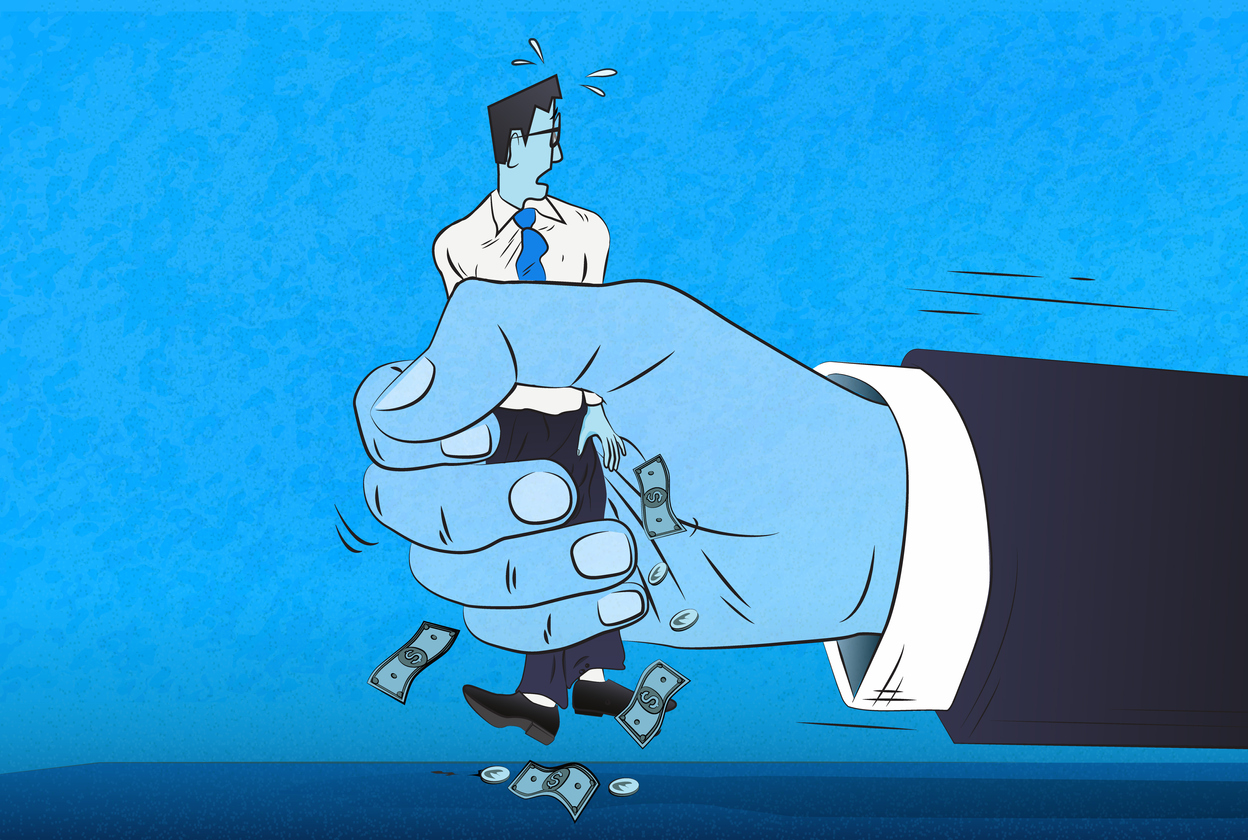Are we nearing another recession?
According to the 5-year and 30-year Treasury yields, we may be. Both just inverted again.
Earlier today, the 5-year was up to 2.522% as the 30-year stood at 2.412%.
When the curve inverts, “there has been a better than two-thirds chance of a recession at some point in the next year and a greater than 98% chance of a recession at some point in the next two years,” according to Bespoke, as quoted by CNBC.
As for jobs, March non-farm payrolls were up by 431,000 for the month, with the unemployment rate now at 3.6%. Economists were looking for 440,000 and a jobless level of 3.7%. Also, payroll additions for January and February were revised up by a total of 92,000.
What we’re most concerned about is inflation.
Once we remove food and energy, the headline PCE measure jumped 5.4% year over year – the biggest jump since 1983. With food and energy, that number was 6.4% — the highest since January 1982. Of course, that impacted consumer spending, which was up 0.2% for March, which was below expectation for 0.5%.
To combat that issue, Goldman Sachs says the Federal Reserve could hike rates by a half a point in each of the next two meetings. However, Citi analysts say the Fed could hike rates by half a point at each of its next four meetings to bring inflation under control.
So how can we profit from rising rates? Here are two ways.
One, when rates climb, margins expand, which is good for banks, and brokerage firms.
“Analysts are bullish on shares because among the big banks Bank of America is one of the most sensitive to interest-rate hikes. With it widely expected that the Fed will raise interest rates at least three times this year, Bank of America would be poised to benefit more than peers,” as noted by Barron’s. In addition, Wells Fargo just raised its earnings estimates on Bank of America, believing rate hikes will boost its profits.Two, look at the SPDR S&P 500 Dividend ETF (SDY) – which, since inception, has returned about 9% average gains per year.
Even better, the ETF invests in companies that have consistently increased their dividends each year for the better part of the last 20 years. That includes AT&T, AbbVie Inc., Exxon Mobil Corporation, Chevron Corporation, National Retail Properties, IBM, and Cardinal Health to name a few of the top ones. Plus, the ETF carries a dividend yield of 2.68%.
“While a rise in rates would diminish the attractiveness of dividend stocks with premium valuations and low growth, more high-quality dividend payers or the group of dividend growers may stand out. The dividend growth exchange traded fund strategy has helped investors capture the upside potential of a strengthening equities market through quality company exposure,” says ETF Trends.
Markets
- The Dow is up 175 points to 34,793
- The S&P 500 is up 22 points to 4,552.75
- The NASDAQ is up about 81 points to 14,949.75
- Gold prices are currently down by $6.67 to $1,930.79
- Bitcoin is down about 4.5% to $45,020.51
- Oil prices are down another $1.09 to $99.19
- The VIX is up to 20.12 this morning
Trading Tips
Hydrogen could get explosive.
Goldman Sachs recently said green hydrogen could create a $12 trillion opportunity in the next 30 years with the U.S., Asia, and Europe leading the way.
Analysts at Bank of America says green hydrogen could be worth more than $11 trillion by 2050, as well. In fact, the firm compared green hydrogen to smartphones pre-2007 and the Internet prior to the dot-com boom, as also highlighted by Barron’s.
In addition, according to Fortune, “By 2050, clean hydrogen will make up as much as 25% of our net-zero energy mix, according to Bloomberg New Energy Finance (BNEF), generating a $20 trillion infrastructure investment opportunity, new technologies, companies, jobs, and ultimately a cheaper energy system than we have now.”
Nowadays, as the world tries to wean itself off of Russia’s oil and gas, hydrogen is center stage.
Here’s how we can potentially profit from that.

